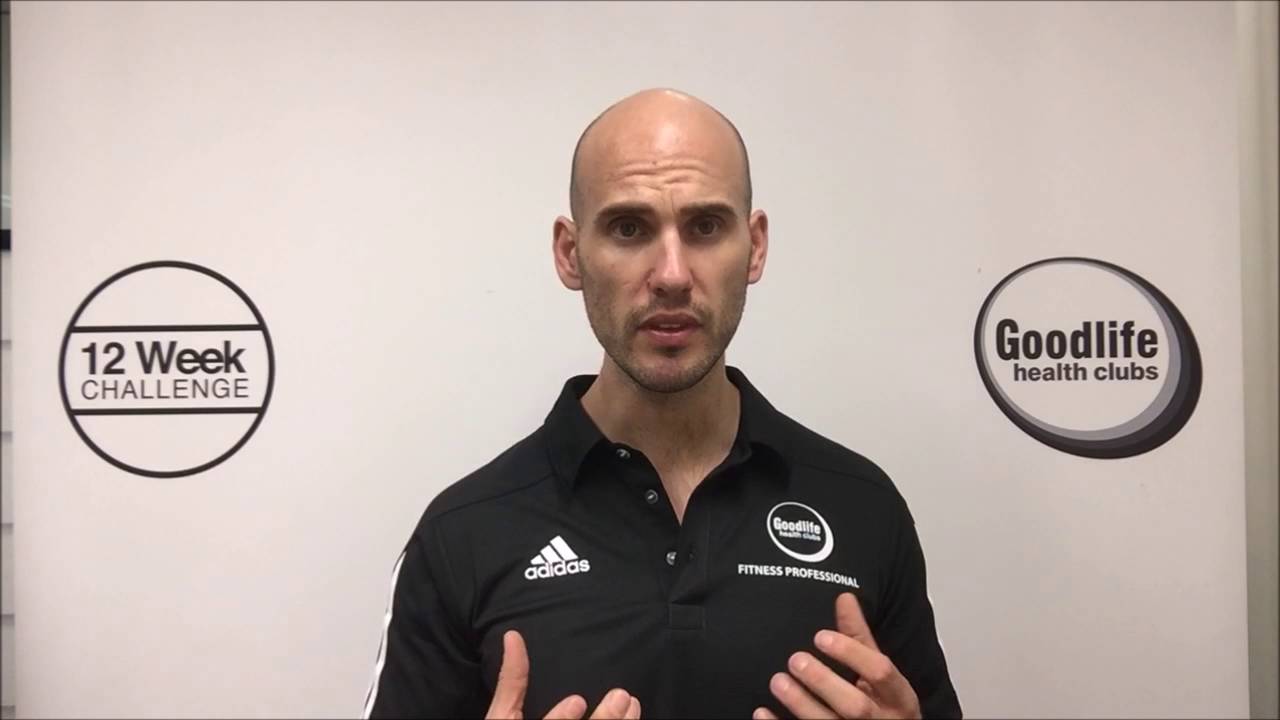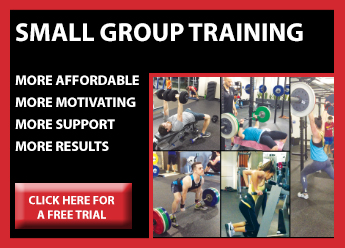In today’s blog, I want to talk about the top three reasons people don’t see results. Number one, for me, is definitely consistency. That’s consistency with training and with diet. What I’ve found with most people with their training is one week they’ll train once a week, the next week they’ll train five times a week, the week after they train three times a week. There’s just no consistency in what they’re doing. What I like to do when I sit down with clients is we sit down, we work out how many days they’re available to train in each week. After that, we work out how many days they can realistically stick to each week based on their lifestyle. What we do is we write out a training plan. We write out the workouts they’re going to do each week into a weekly schedule, and they’re expected to do those workouts each week, no matter what. That way we can create some training consistency.
The next part of consistency is definitely with diet. What I’ve found with most people is they just lack consistency. There’ll be random meals left and right. Some days they’ll skip breakfast, sometimes they’ll eat breakfast, some meals will be a high carb meal, some meals will be a high protein meal. There’ll be random treat meals left and right. There’s just no consistency. What I feel works best is if you have a training template to stick to. That’s what all of my clients have. We have a set template of we should eat certain foods at certain times based around when you train. All you need to do is plug in the foods you like to eat and that way we have consistency each day that we know what we’re eating based around when we train.
The second reason why most people aren’t seeing results is definitely accountability. This is a massive one. People lack accountability with their training and their diet. The number one accountability tool that I’ve found is definitely the food and exercise diary. With the food and exercise diary, what you’ll do is you’ll write down all the food that you eat for the day. What we’re going to do, we’re going to match that to the template provided. The closer the meals you eat each day get closer to the template, the better results you’re going to get. What we do is we sit down after a week as well and we work on areas where you could improve. We work on only two things at once that you can improve in your diet. We’re just going to tackle those each week. We’re just going to make little improvements each week. All those little improvements are going to add up to one big massive improvement when you finally do all your measurements and stuff like that.
The next part is with training. With training, again, we like to have a training schedule to stick to, which is going to create accountability and also, within each session, knowing what we’re going to do. Having a program or something to follow. That’s definitely going to make you more accountable. Each week, you’re going to write down, take off that you did your session, and in that session you’re going to write down all the weights that you lifted for that session or the cardio that you did for that session just to make sure that we’re seeing progress and improvement each week.
The third part of accountability is definitely with body composition. What I like to do with my clients every four to six weeks, we want to sit down and we want to do all your measurements. We want to do your weight, your girth measurements, your body fat percentage. This way we can track your improvements. This is where I see a lot of people go wrong. Because they avoid doing their measurements like we planned. What will happen is they will stop doing their measurements, all of sudden they don’t eat quite as well, or they don’t train as much, and then they let it slide for the next six months and all of a sudden they’ve put on a little weight and that’s been the problem start to rise.
If you just do it every four to six weeks, you’ll see the improvement. If there is an improvement, at least you wouldn’t have gone backwards too much so you can quickly work out some strategies where you can get back on track.
The third reason why people don’t see their results is definitely support. Support comes in two factors: support at home and support in the gym. Support at home, really, if you’re the only person in your family who’s on a health kick and everyone else is eating bad food, it’s going to be very, very difficult for you to see results. There’s always going to be temptations around you and unfortunately, habits beat good intentions. If there’s something within reach in your house, it will get eaten. If you’re in one healthy mood meal and everyone else around is eating unhealthy meals, the temptation is just going to be too great and eventually you’re going to give in.
What you need to do is you need to sit down with your family and friends, let them know what your goals are, that you want to get healthier, you want to lose some weight, and you ask for their support. You ask them to join you. They don’t have to be as strict as what you’re going to be, but at least if they’re trying to make some sort of effort to make life easier for you, then you’re more likely to get results. It’s really important that you have the support of your family and your friends on your health and fitness journey.
The second part of having support is definitely within the gym. I’ll highly recommend that you have a training partner or training partners. With the training partner, what’s going to happen is they’re going to push you harder than what you’d ever do on your own, and they’re also going to lift you up when you’re having down days. Days where you can’t be bothered, where you may have skipped the gym, you’re more likely to come in if you have a friend or someone that you’re going to train with.
I know with our clients I have a small group training program, so they all train four people at once and it creates a very motivating environment for them to train in. If someone’s down, the rest of the group will pick them up. Also, when someone’s new to the group and they see other people that are lifting heavier than them or getting better times in their cardio workouts, it’ll help push them harder, and when they’re pushing themselves harder, they’re more likely to get better results. Part of having support in our group as well is we have a Facebook group that I can share workouts, share recipes, share their results. It creates a very motivating environment which means you’re more likely to get results.
If you’d like to find out more about my small group training program, below there’ll be a link where you’ll be able to book in a free consultation. We’ll sit down and go through your goals, you join in on a small group training session, and then afterwards we’ll work out programs that are best going to suit you moving forward.


Leave A Comment